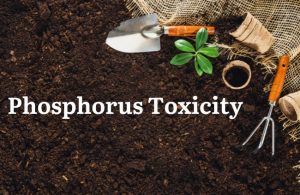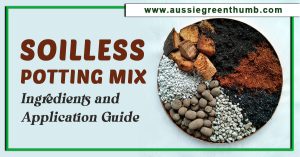Gardening in clay soil is often regarded as somewhat of a handicap by most gardeners, especially those gardeners that have preference for growing plants that do require a well drained soil.
More...
Can You Grow Plants in Clay Soil?
Most of the popular West Australian natives and South African Proteas that naturally grow in sand and well draining gravels and loams have a preference for soils with good drainage.
These plants are always very popular to grow as many have large, exotic, showy flowers. Therefore if you are a gardener with a liking for these plants it begs to ask the question…..can you still grow these types of plants in a clay soil?
Well being a gardener who has gardened in clay soil for over 10 years I can honestly say, yes, and basically it just comes down to following a few rules.

Personal Take on Breaking Up Clay Soil and Adding Gypsum
Firstly though can I just say this. Recently I was listening to a gardening program on the radio where a gardener asked the question about planting into a clay soil. The answer given by the gardening commentator was to dig down into the clay and try and break it up and maybe add some gypsum.
Now this is not the first time I’ve heard this type of response to this question and in some respects this answer does bother me. Why? Well consider this. The biggest problem with clay is the fact it doesn’t allow water to pass through it very easily.
Therefore once you start digging into it you really do need to be prepared to keep digging all the way through the layer of clay until you find a layer of soil that is free draining so the excess water has a means to drain away.
Now does this sound like a viable exercise for every plant you plant into clay soil? Not really, the hole you dig may have to be quite deep to make it effective. Therefore once you start digging into clay all you’re really doing is providing an area for water to accumulate after rain. This is not an ideal situation.
Now you must understand this, many areas of South Eastern Australia have been in drought up until recently so using the above mentioned method of planting hasn’t really been a problem as there hasn’t been the rainfall to make it a problem. Therefore many plants have survived for years planted into a hole dug into a clay soil.
At the end of 2009 South East Australia started getting lots of rain again and then all of a sudden plants that had survived the drought for years started to die and mainly it was caused by bad planting in unsuitable areas where excess water all of a sudden became a problem.
Therefore the number one rule when gardening with a clay soil or a clay subsoil is make sure excess water has a means to drain away. This also applies not only for water on the surface but below the surface as well.
After all, if you dig a hole into a clay soil and then replace it with a freer draining soil, plus the root ball of a plant, do you really believe the excess water will drain away? No it won’t, the hole will just act like a bucket.
One solution to avoid this is to plant plants with smaller root balls such as those grown in tubes. In most cases these plants will quite often outgrow a larger plant anyway.

So What is the Best Solution for Gardening in Clay Soil?
Well to start off with the obvious solution is to use plants that are tolerant of clay soils. Callistemons, Melaleucas and some Banksias, Grevilleas and Eremophilas all have some species and hybrids that are suitable.
But what if you want to plant plants that require a well draining soil into a clay soil?
Well the easy solution is to garden on sloping terrain. The excess water will easily drain away and not become a problem. Just make sure you don’t dig a large hole in the clay to plant your plant.
But what if you haven’t got a sloping garden, what if it’s flat?
Well this is where planning your garden and good landscaping can come into play. Use raised garden beds and you can go about this in two different ways. Firstly you can import lots of suitable garden soil that is free draining or you can do what I did.
I excavated an area of my garden and mounded the excess clay into raised garden beds. I then used compost and gypsum and a small cultivator and then mixed all the compost and gypsum into the clay mounds which were to form my garden beds.
What I ended up with was a friable, well draining soil that I could plant all manner of plants that require a well drained soil. Now if you decide to take this option just make sure the areas you excavate aren’t too deep.
You can turn them into pathways and provide underground drainage to direct the water away from the garden beds. Sounds like too much work? Well remember this……….you only have to do it once.
The most important thing to remember though is you must provide a means for excess water to drain away. Correct landscaping is essential, whether it be natural or man made.
At the end of the day though, there are many ways to go about gardening in a clay soil and not every plant will grow in clay but if you employ some of these basic principles you will greatly increase the number of plants you can successfully grow in a clay soil.
Published on June 23, 2023 by AGT
Last Updated on September 28, 2023



